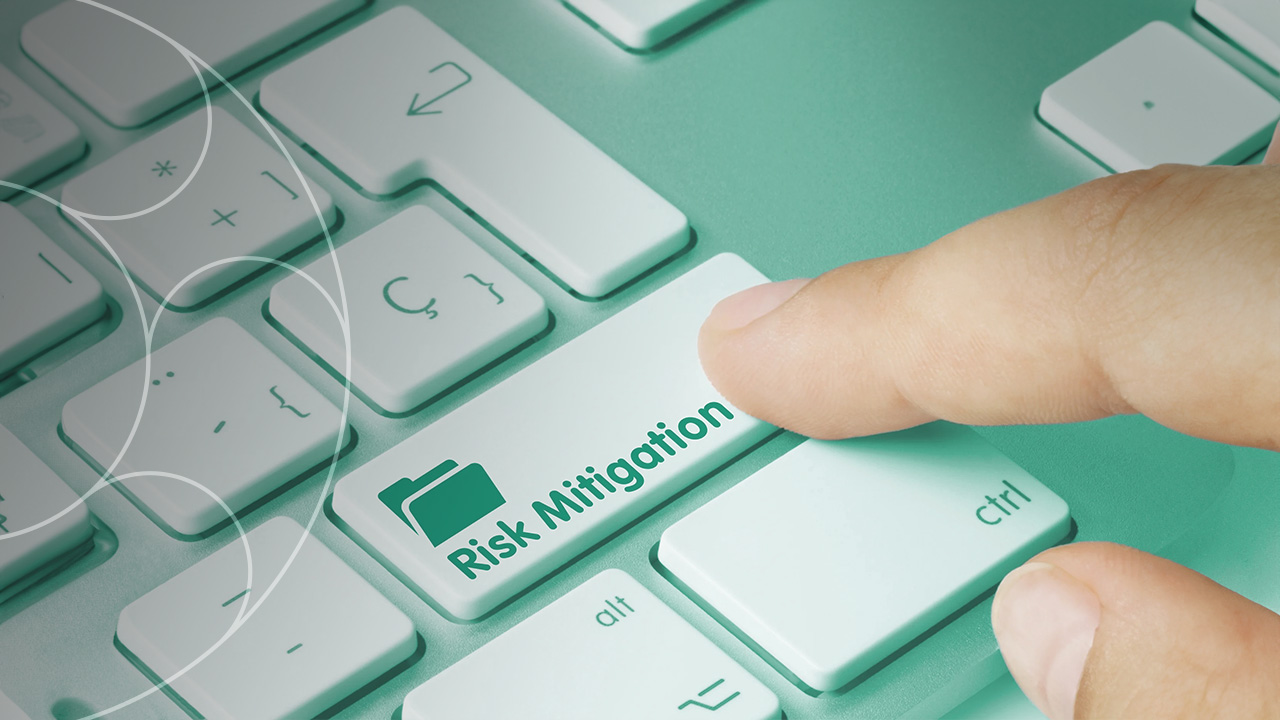Risk Management & Business Continuity: How to Prepare for A Business Crisis

A crisis is a sudden event that can affect any company, regardless of the type of industry, the amount of resources, size, or years in the market. According to a 2019 PwC survey, 69% of businesses have faced at least three crises in the last five years.
When presented with these statistics, companies must possess the appropriate resources and expertise to handle any situation threatening their ongoing operations effectively.
Join us today and discover what a business crisis is, how it occurs, its types, and finally, how you can establish an adequate enterprise risk management framework so that your staff can overcome it.
Let's get going!
What is a business crisis?
A business crisis is a sudden and shocking event or occurrence that represents a danger to a business's reputation, financial stability, or commercial activities. It is a situation that unexpectedly and seriously disrupts the business organization and demands an immediate action plan to control or mitigate its impact as it jeopardizes the company's continuity.
Is there only one type of crisis? What events could create a problem within a business?
Read on!
Types of business crisis
Different situations can trigger a crisis within the business organization, such as:
- Natural: such as a natural disaster, flood, tornado, fire, etc.
- Technological: a cyber-attack, a failure in the IT tools and devices you use daily.
- Financial: financial fraud, inflation, devaluation, problems with the organization's revenues, profitability, and payments.
- Ethical: misconduct, such as abuse of power, misappropriation of resources, discrimination, etc., by employees or executives.
- Organizational: a labor strike, miscommunication, or poor executive management that affects the healthy functioning of the organization.
Each of these events could affect the execution of operations significantly, disrupt the supply chain, reduce revenues, and even generate legal consequences.
What is effective business crisis management?
A crisis within the company requires an immediate response and a strategic and coordinated response by the company's managers and its members to contain the effects of the unexpected event and protect employees, partners, shareholders, and, above all, customers.
Effective crisis management is based on four key points such as:
- Clear communication between managers and teams.
- Rapid decision-making.
- Focus on minimizing damage.
- Ensuring the long-term sustainability of the company.
Here are some tips for designing a crisis action plan.
How to design a good enterprise risk management framework to avoid a crisis?
As mentioned above, no company is exempt from suffering a crisis, so creating an effective crisis management strategy is essential. A well-structured plan can reduce or control the negative impact of these unexpected events and severe damage to your reputation and financial stability.
How to achieve a quick and successful response? Here are five basic steps that are the key to implementing an enterprise risk management framework so that you and your team are prepared to face the crisis.
Check them out!
- Identify potential risks or threats
The first step to making a business crisis management plan is to conduct a deep analysis to detect and discover what facts or events could affect the company's operations. This should be a meticulous evaluation and include events such as natural disasters, cyber-attacks, the exit from the market of the product the company offers, financial fraud, an employee strike, or a pandemic. Once identified and appropriately segmented, it is necessary to define its impact on the business organization, be it financial losses, reputational damage, etc.
The next step is to develop a tentative response to each scenario, so we move on to step 2.
- Create a crisis management team
Often companies have a risk management team, which is in charge of anticipating and controlling potential threats. If your business does not have such a team, this is the perfect opportunity to integrate it.
Create a team with people who are capable and responsible for handling the crisis according to their skills and preparation.
Pro tip: be sure to include members from different departments, such as human resources, finance, legal, public relations, etc., to have experts in other areas.
- Define roles and responsibilities
In this step, it is crucial to define the roles of each of the crisis management team members to indicate which scenario they will work on to build a response according to the potential crisis and which members should be supported. For example, in the case of a potential ethical problem due to misconduct, public relations and legal members should work hand in hand to find a solution.
It is also essential to indicate which of the members is in charge of communicating immediately that a crisis has occurred or is imminent, who is responsible for making decisions according to each scenario, and who is in charge of executing the plan.
- Design a communication strategy
Any plan to mitigate a crisis requires good communication so all levels and areas are on the same page. In your strategy, be specific about how the company will communicate with its employees, partners, shareholders, and customers during a potential crisis. Also, indicate which communication channels will be used (website, social media, TV, press, etc.) by whom and what information will be shared.
- Review and update the plan
A plan or strategic response would only be effective if you test it regularly to ensure that it is practical and up-to-date, and that the answer is prudent or consistent with the potential crisis. To test its effectiveness, conduct small drills to detect any flaws, gaps, or weaknesses that must be corrected.
Pirani: IT tools for best practices in a crisis
Business organizations can effectively manage operational risks and prevent crises by incorporating IT tools like Pirani. This solution is configured and updated to ensure the company adheres to operational standards and regulatory protocols. Through an interconnected structure, the platform allows communication and participation of all areas and levels in risk management.
In addition, Pirani is a customizable option that adapts precisely to each organization's business risk management methodology. It provides support at all times so that each company can generate risk indicators and obtain real-time reports on the progress of its operations to facilitate fact-based decision-making. It allows you to create fields to monitor the progress of processes or events and have all the information you need available in one place.
Unleash the potential of Pirani!
Do you have a business crisis plan? Do you use any tool for it?
You May Also Like
These Related Stories

How to Create a Business Continuity Plan

9 Essential Risk Management Strategies for Business Success

8 Essential Risk Mitigation Strategies for Businesses

Building a Culture of Risk Management in Your Business

Techniques to assess risk in your business



No Comments Yet
Let us know what you think